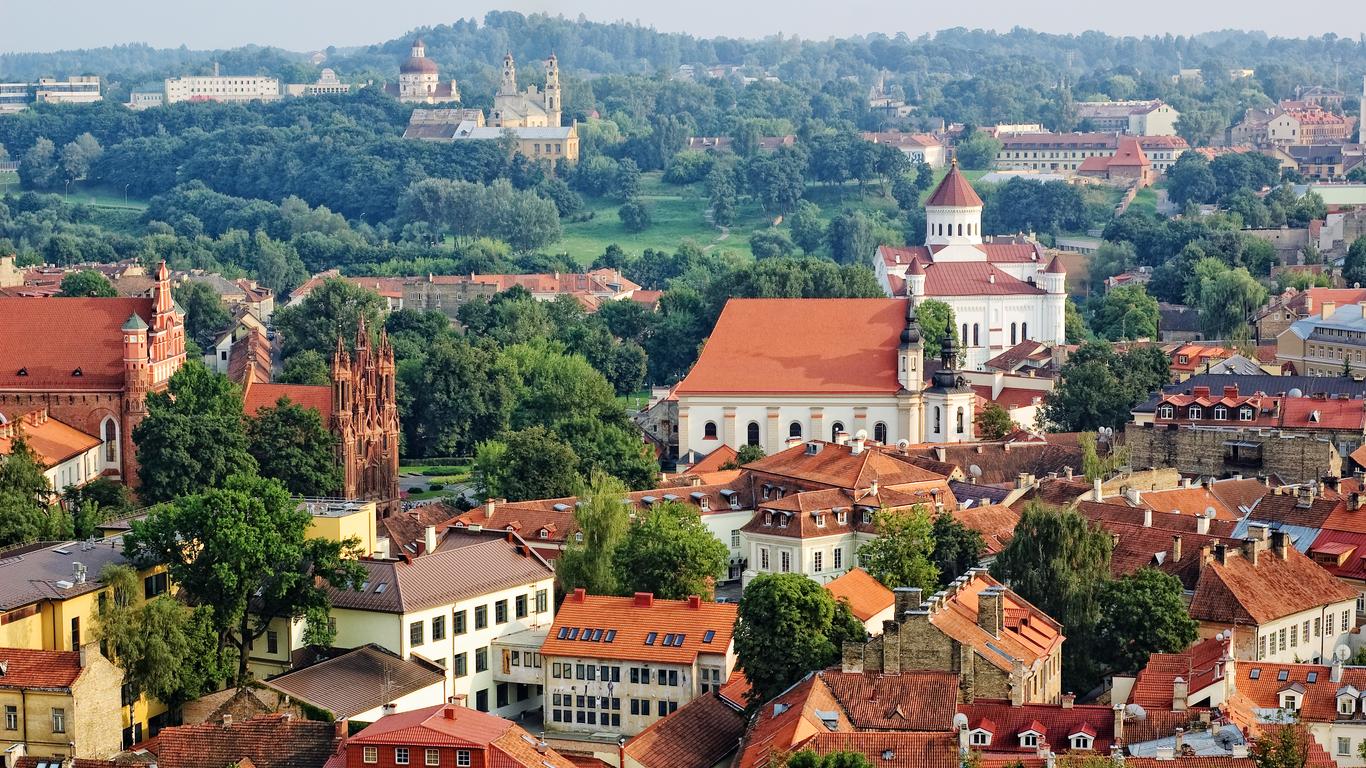Centred around Lithuania’s capital city, Vilnius County is the largest of the country’s 10 counties. Its recent history includes periods under Soviet and Polish rule before being occupied by the Germans during World War I. In 1990, Vilnius County became part of an independent Lithuania.
Things to do in Vilniaus Apskritis
With fascinating museums, fairytale-like castles and spectacular protected areas, Vilnius County offers plenty of travel inspiration.
Sightsee in Vilnius. One of the largest cities in the Baltic states, Vilnius centres around a medieval Old Town dominated by cobblestone streets and centuries-old churches. Step through the 16th-century Gate of Dawn and admire the Neoclassical architecture of Vilnius Cathedral, then soak up the city views from the Gediminas Castle Tower. Also not to miss is the Museum of Occupations and Freedom Fights, which details the 50-year Soviet occupation of Lithuania.
Visit Trakai Island Castle. Located on an islet in Lake Galvė, this stone-built castle was established in the 14th century by the medieval ruler, Kęstutis. It held strategic importance for the Grand Duchy of Lithuania and was rebuilt in the mid-20th century, with a long, wooden bridge connecting it to the city of Trakai. Browse the archaeological findings and artefacts on display or coincide your visit to the castle with a concert, event or medieval festival. In the winter months, Lake Galvė freezes over to become a natural ice skating rink.
Explore Neris Regional Park. Encompassing nine mounds to the north-west of Vilnius, Neris Regional Park is a 10,000-hectare protected area of extraordinary beauty. Stretch your legs on the wilderness trails that wind through its river valleys or set out to explore on a rafting expedition. Scattered throughout the park are 30 natural and cultural heritage sites that include one of the oldest surviving oak forests in Lithuania.
Getting around Vilniaus Apskritis
Vilnius International Airport is the main aviation gateway to Vilnius County and has flights to destinations across Europe and the Middle East. Trains connect from cities throughout Lithuania to the Vilnius railway station and buses travel to the surrounding towns and villages.





